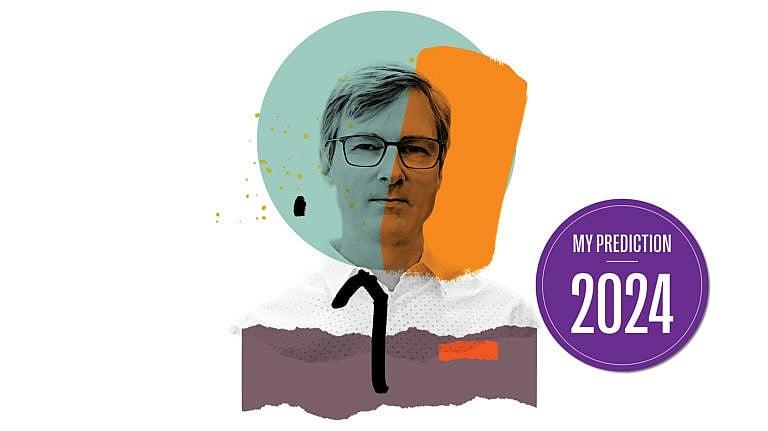Cities will learn to live with encampments
Tent cities are here to stay, thanks to increasing support from the courts

Share

Stepan Wood is a Canada Research Chair in Law, Society and Sustainability at the Peter A. Allard School of Law, University of British Columbia
Recent research estimates that more than 235,000 Canadians are now homeless. The actual count is almost certainly higher and has been steadily growing since the pandemic. COVID rapidly worsened conditions for unhoused and precariously housed people, as shelters and daytime services closed or drastically reduced capacity. It also exacerbated social crises that make encampments necessary: mental health issues, a toxic drug supply, gender-based violence and, of course, access to housing, which is less affordable by the minute.
I got involved with the encampment issue in May of 2020, after the clearance of Oppenheimer Park, a 300-person encampment on Vancouver’s Downtown Eastside. Following the dispersal, some people who couldn’t find alternative housing congregated in an unused parking lot nearby, which was also later cleared. Lawyers representing the group for free asked me to provide an affidavit to support their defence against a court injunction evicting the encampment. Since then, there’s been a visible and unprecedented increase in encampments on public lands across the country. This goes for major cities like Edmonton, Toronto and Ottawa, as well as smaller suburbs, like Ajax, Ontario, and Longueuil, Quebec.
READ: My life in a tiny home community
Encampment removals can be violent and traumatic: they often involve the destruction of people’s shelters and belongings, sometimes under cover of a court order. Municipalities or provincial governments—depending on who owns the land—typically ask courts for interim injunctions, eviction orders issued in the early stages of a lawsuit in response to alleged harms like increased crime, fires and open drug use. In B.C., governments have won 85 per cent of these cases, an astounding success rate given that injunctions are supposed to be extraordinary, drastic remedies. Since 2021, however, courts have been more reluctant to hand out these quick fixes. They are increasingly likely to rule that the harm caused by continually displacing unhoused people outweighs the risks encampments pose to their occupants and surrounding communities.
Let’s be clear: everyone wants tent cities to be a thing of the past, their residents included. But encampments afford residents the chance to live in stable communities close to support services, like respite and health centres. They offer them the freedom to live with companions of their choosing and semi-private places to store their belongings. Government-provided alternatives, like shelters and single-occupancy hotel rooms, come with substantial downsides such as rampant theft and violence—and that’s on the off chance they have space. Encampments are often the lesser of two evils.
In 2024, I predict that courts will be even more reluctant to grant evictions. Instead, governments will explore strategies that were once considered unthinkable: legalized encampments, transitional tiny homes and universal basic income. Cities like Kelowna and Prince George have already designated areas where encampments are permitted 24/7. As of last August, under the leadership of Mayor Andrea Horwath, the city of Hamilton now allows up to five tents in any city park, subject to certain restrictions (though it continues to crack down on larger encampments). Last January, a judge rejected the Waterloo region’s request to evict an encampment on a vacant region-owned lot in Kitchener, Ontario, affirming the right to erect temporary shelters overnight and during the day. I think we’ll see more sanctioned cases, though their locations will depend on how NIMBY-ish the neighbours are.
READ: Why an Ontario city is now permitting homeless encampments and tiny homes in parks
There will be pushback, of course. Some governments will keep trying to justify evictions, perhaps clarifying what constitutes “adequate alternative shelter” for encampment residents. The B.C. government recently tabled Bill 45, which purports to do this. Unfortunately, it does not factor in the need for daytime shelter, practical barriers to accessing shelter and the distinct situation of unhoused Indigenous people.We may also see an increased push toward criminalizing homelessness more generally. The B.C. government has introduced another bill that aims to keep drug use away from schools, parks and playgrounds. The premise sounds reasonable, but the bill’s list of prohibited places is so broad that Canadians without private space will effectively be criminalized for their addictions. All over Canada, there’s been a push to implement “safe streets” bylaws—laws that prohibit panhandling, sleeping outside and even loitering in public spaces, all of which are hallmarks of poverty and homelessness.
Encampments aren’t a permanent fix, but they are a viable harm-reduction strategy in the absence of safe, accessible and affordable housing for all. Securing that is our next job.

This article is part of the Year Ahead 2024, which is Maclean’s annual look at everything that’s coming your way next year. You can buy the print version right here.